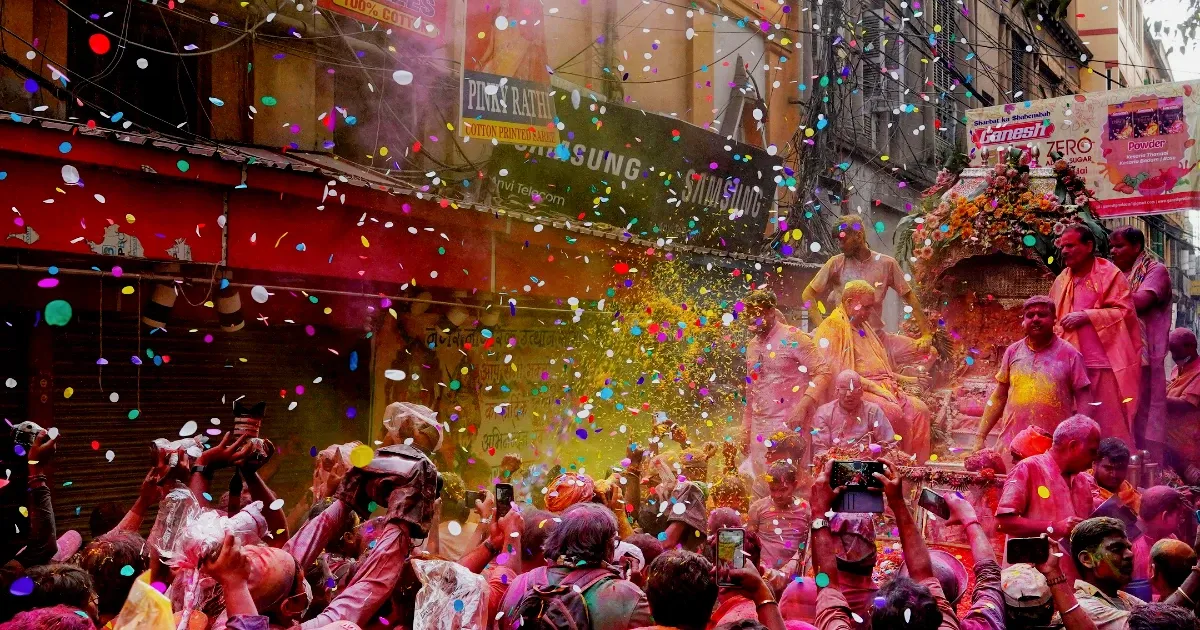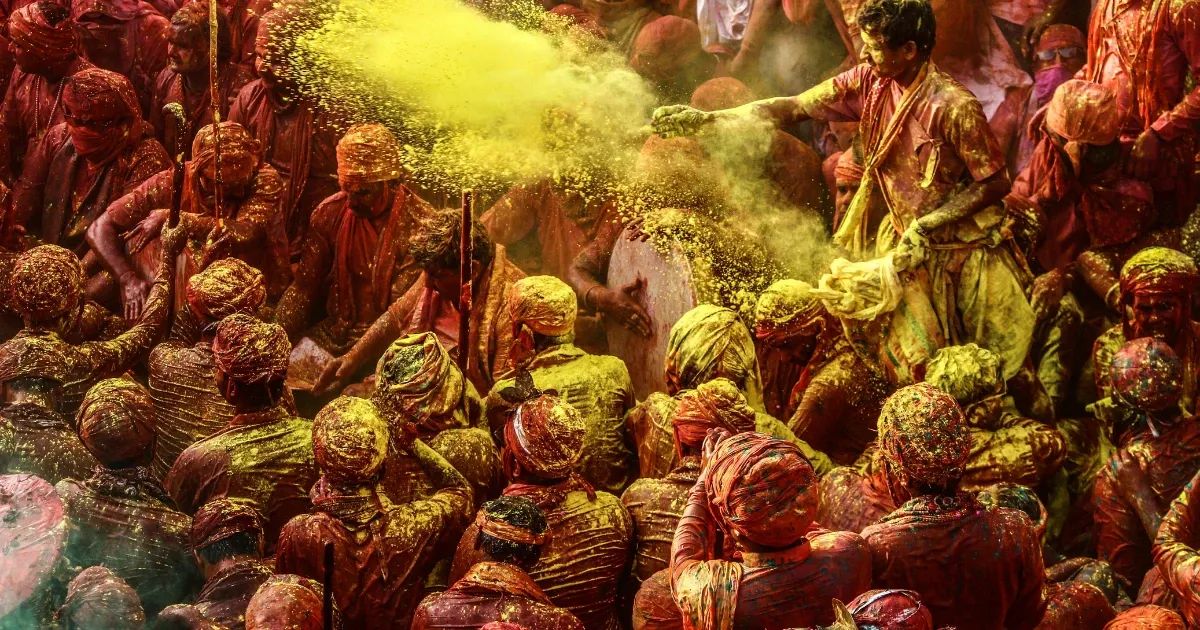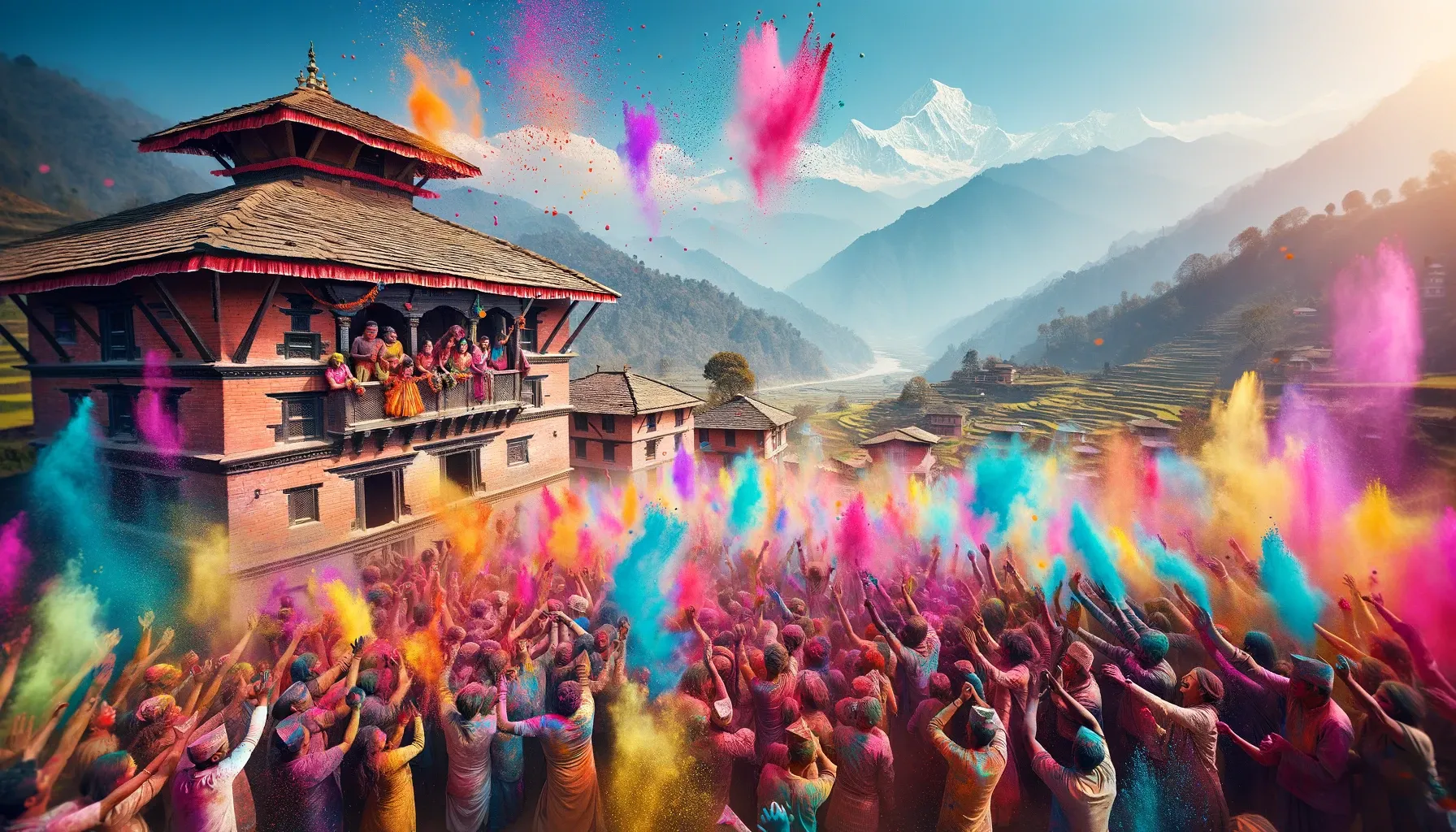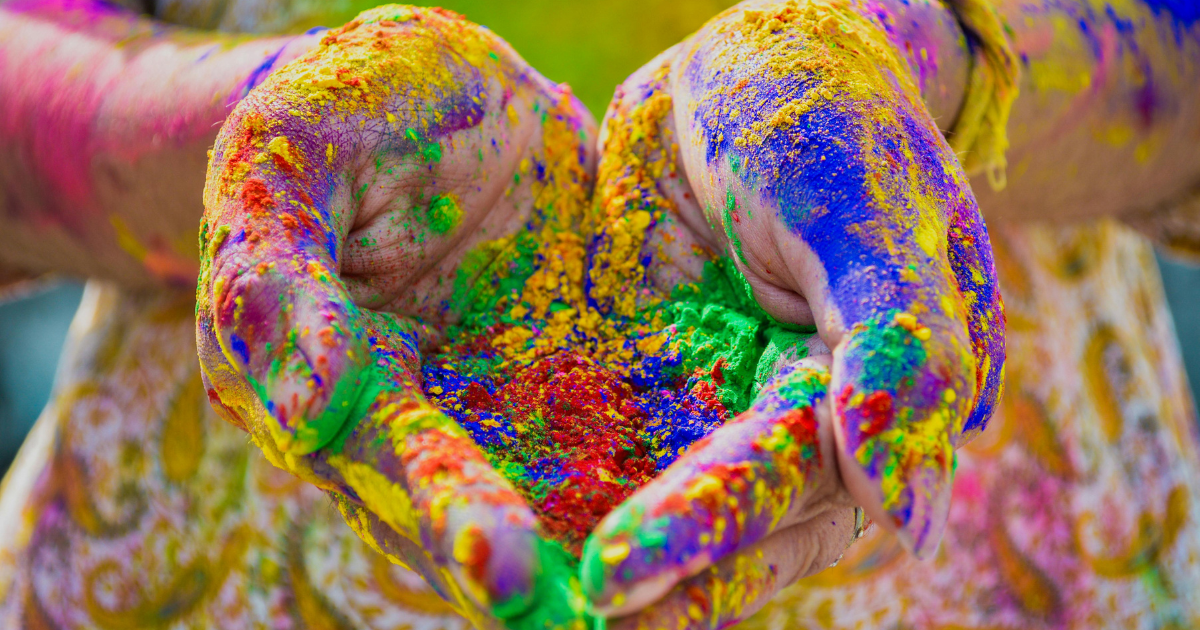(full-width)
20 interesting facts about Falgun Purnima (Holi)
Synopsis: Holi, known as the "festival of colors," marks the end of winter and the beginning of spring, celebrated on the full moon day in February or March. It signifies the victory of good over evil, as depicted in the story of Prahlada and Holika, and is observed widely in India, Nepal, and by the Indian diaspora worldwide. Participants wear white, throw colored powders and water, and enjoy traditional foods and cultural performances. Holi also embraces eco-friendly practices amid concerns over chemical colors, reinforcing its significance as a vibrant, communal celebration of renewal and joy.
1. Holi is also known as the "festival of colors" and is celebrated on the full moon day in the month of Falgun (February/March).
2. The word "Holi" is derived from the Sanskrit word "Holika", which refers to the demoness who was defeated by Lord Vishnu's devotee Prahlada.
3. Holi is primarily celebrated in India and Nepal, but it is also observed by people of Indian origin living in other parts of the world.
4. It is believed that Holi marks the end of winter and the beginning of spring, which is why it is also known as the "spring festival".
5. On the day of Holi, people traditionally wear white clothes and smear each other with brightly colored powders and water.
6. The powders used during Holi are known as "gulal" and are made from a variety of natural ingredients such as turmeric, sandalwood, and flowers.
 |
| Celebrating Holi in Nepal |
7. Another popular tradition during Holi is the use of water guns and balloons filled with colored water.
8. Holi is also a time for feasting and celebration, with traditional dishes such as gujiya, mathri, and thandai being prepared and shared among friends and family.
9. In some parts of India, Holi is also celebrated as a harvest festival, with people offering thanks to the gods for a bountiful crop.
10. In Mathura and Vrindavan, the birthplace of Lord Krishna, Holi is celebrated with great enthusiasm and is known as "Phoolon wali Holi" or the "flower Holi".
11. In West Bengal, Holi is known as "Dol Purnima" and is celebrated by smearing each other with colored powder and throwing flowers.
 |
| Celebrating Holi |
12.In parts of South India, Holi is celebrated as "Kamavilas", which marks the day when Lord Kamadeva (the god of love) was reborn.
13.In some regions of India, Holi is celebrated as "Rang Panchami", which falls five days after the main Holi celebrations and involves playing with colors once again.
14. In Nepal, Holi is known as "Fagu Purnima" and is celebrated 2 days, with each day being dedicated to a different deity.
15. In Pakistan, Holi is celebrated by the Hindu community in the Sindh province and is known as "Hola Mohalla".
16. In Mauritius, Holi is a public holiday and is celebrated with great enthusiasm by the Hindu community.
17. The famous "Lathmar Holi" is celebrated in the town of Barsana near Mathura, where women chase men with sticks and men protect themselves with shields.
18. Holi is also a time for cultural performances such as folk dances, music, and plays.
19. Holi is one of the oldest Hindu festivals and is mentioned in ancient Sanskrit texts such as the Puranas and the Vedas.
20. In recent years, the use of chemical colors during Holi has caused concern due to their harmful effects on the environment and human health, leading to calls for a more eco-friendly celebration.
 |
| DALLE- AI Generated Photo - HOLI |


